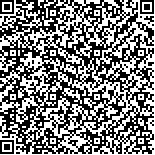| 引用本文: |
雷华娟,田丰铭,易健,邓涓,李梓欧,戴金城,郭芬乐,李乐,刘柏炎.养阴宁神方对去势小鼠海马神经元突触的可塑性调节[J].湖南中医药大学学报,2024,44(1):30-37[点击复制] |
|
| |
|
|
| 本文已被:浏览 1072次 下载 559次 |
| 养阴宁神方对去势小鼠海马神经元突触的可塑性调节 |
| 雷华娟,田丰铭,易健,邓涓,李梓欧,戴金城,郭芬乐,李乐,刘柏炎 |
| (湖南中医药大学第一附属医院麻醉科, 湖南 长沙 410007;长沙医学院, 湖南 长沙 410219;湖南中医药大学第一附属医院麻醉科, 湖南 长沙 410007;湖南省中医药研究院, 湖南 长沙 410013;新疆医科大学, 新疆 乌鲁木齐 830054) |
| 摘要: |
| 目的 观察养阴宁神方对雌性小鼠去势后认知功能的影响。方法 将60只C57BL/6J雌性小鼠随机分为假手术组,模型组,雌激素组,低、中、高剂量组,每组10只。假手术组仅切开皮肤和腹膜,不摘除小鼠的卵巢;其余各组均进行双侧卵巢切除术。假手术组、模型组均给予等容量的生理盐水(0.1 mL/10 g),雌激素[雌二醇(estradiol, E2),0.09 mg/kg]组及低剂量组(9.459 g/kg)、中剂量组(18.459 g/kg)、高剂量组(36.99 g/kg)灌胃药液,均灌胃3周。记录小鼠术后伤口愈合时间,去势前、去势1周、去势4周进行水迷宫潜伏实验和穿梭实验测试小鼠的学习记忆功能。采用ELISA法测定血清E2含量;HE染色观察小鼠海马神经元的形态;尼氏染色观察海马神经尼氏染色阳性细胞的数量;共聚焦显微镜下观察小鼠海马神经元细胞超微结构情况。结果 与假手术组相比,模型组伤口愈合时间延长(P<0.05);与模型组、雌激素组及低、高剂量组比较,中剂量组伤口愈合时间缩短(P<0.05)。去势1周,与假手术组比较,模型组、雌激素组及低、中、高剂量组逃避潜伏期延长、穿梭次数减少(P<0.05)。去势4周,与假手术组比较,模型组逃避潜伏期延长、穿梭次数减少(P<0.05);与模型组相比,雌激素组及低、中、高剂量组逃避潜伏期缩短、穿梭次数增加(P<0.05)。去势4周,与假手术组比较,模型组E2浓度明显降低(P<0.01);与模型组比较,雌激素组及低、中、高剂量组E2浓度明显增高(P<0.01)。尼氏染色显示,与假手术组比较,模型组尼氏阳性细胞数减少(P<0.01);与模型组比较,雌激素组及低、中、高剂量组尼氏阳性细胞数增加(P<0.01)。HE染色显示,假手术组,雌激素组,低、中、高剂量组锥体神经元增多,且突起明显;模型组锥体神经元较少、颗粒细胞较多。共聚焦显微镜下见,假手术组,雌激素组,低、中、高剂量组海马神经元囊泡和突触粗面内质网结构增多;模型组海马神经元囊泡和突触减少。结论 养阴宁神方可能通过提高血浆E2水平、改善海马神经元突触形态和功能可塑性、增加去势小鼠的认知功能,从而发挥脑保护作用。 |
| 关键词: 养阴宁神方 去势 雌激素 海马 神经元 突触可塑性 |
| DOI:10.3969/j.issn.1674-070X.2024.01.005 |
| 投稿时间:2023-06-29 |
| 基金项目:国家自然科学基金青年基金项目(8210151330);湖南省中医药管理局项目(C2023036);湖南省自然科卫联合基金项目(2021JJ70107);湖南中医药大学重点项目(2019XJJJ040)。 |
|
| Modulation of synaptic plasticity of the hippocampus in ovariectomized mice by Yangyin Ningshen Formula |
| LEI Huajuan,TIAN Fengming,YI Jian,DENG Juan,LI Zi'ou,DAI Jincheng,GUO Fengle,LI Le,LIU Baiyan |
| (Department of Anesthesiology, The First Hospital of Hunan University of Chinese Medicine, Changsha, Hunan 410007, China;Changsha Medical University, Changsha, Hunan 410219, China;Department of Anesthesiology, The First Hospital of Hunan University of Chinese Medicine, Changsha, Hunan 410007, China;Hunan Academy of Chinese Medicine, Changsha, Hunan 410013, China;Xinjiang Medical University, Urumqi, Xinjiang 830054, China) |
| Abstract: |
| Objective To observe the effects of Yangyin Ningshen Formula (YYNSF) on cognitive function in ovariectomized female mice. Methods Sixty C57BL/6J female mice were randomly divided into sham-operated group, model group, estrogen group, and low-, medium-, and high-dose YYNSF groups, with 10 mice in each group. Sham-operated group underwent skin and peritoneal incision without removing the ovaries, while the rest groups were subject to bilateral ovariectomy. Sham-operated and model groups were given equal volume of saline (0.1 ml/10 g), while estrogen group [estradiol (E2), 0.09 mg/kg], and low- (9.459 g/kg), medium- (18.459 g/kg), and high-dose (36.99 g/kg) YYNSF groups were given corresponding medications. All groups were treated by gavage for three weeks. The wound healing time after surgery was recorded. Morris water maze with recording latency and cross times were carried out before ovariectomy, one week and four weeks after ovariectomy respectively, in order to assess the learning and memory function of the mice. ELISA was used to measure the level of serum E2; HE staining was performed to observe morphology of the hippocampal neurons; Nissl staining was used to observe the number of Nissl-positive cells in the hippocampus; confocal microscopy was used to observe the ultrastructures in the hippocampal neurons. Results The wound healing time of model group was longer than that of sham-operated group (P<0.05). Compared with model, estrogen, and low- and high-dose YYNSF groups, the wound healing time of medium-dose YYNSF group was shortened (P<0.05). The Morris water maze test revealed that compared with sham-operated group, all other groups showed prolonged escape latency and reduced cross times at one week after ovariectomy (P<0.05). At four weeks after ovariectomy, model group showed prolonged escape latency and reduced cross times compared with sham-operated group (P<0.05). Compared with model group, estrogen and low-, medium-, and high-dose YYNSF groups showed shorter escape latency and more cross times (P<0.05). Compared with sham-operated group, E2 level in model group decreased significantly at four weeks after ovariectomy (P<0.01); while compared with model group, E2 level in estrogen and low-, medium-, and high-dose YYNSF groups increased significantly (P<0.01). Compared with sham-operated group, Nissl staining demonstrated a decrease in the number of Nissl-positive cells in the hippocampus of model group (P<0.01); while compared with model group, the number of Nissl-positive cells in the hippocampus of estrogen and low-, medium-, and high-dose YYNSF groups showed an increase (P<0.01). HE staining showed increased pyramidal neurons and their dendritic synapses in sham-operated, estrogen, and low-, medium-, and high-dose YYNSF groups, and fewer pyramidal neurons and more granule cells in model group. Confocal microscopy showed increased synaptic vesicles and rough endoplasmic reticula in the hippocampal neurons of sham-operated, estrogen, and low-, medium-, and high-dose YYNSF groups, and decreased synapses and their vesicles in the hippocampal neurons of model group. Conclusion YYNSF may exert protective effects on the brain by increasing plasma E2 level, improving synaptic morphology and plasticity of the hippocampal neurons, and enhancing cognitive function of the ovariectomized mice. |
| Key words: Yangyin Ningshen Formula ovariectomy estrogen hippocampus neuron synaptic plasticity |
|

二维码(扫一下试试看!) |
|
|
|
|




